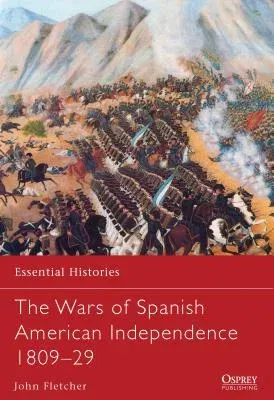Simon Bolivar and Jose de San Martin independently led the South
American revolutionary armies that freed much of Latin America of
Spanish rule.
In 1808, Napoleon Bonaparte treacherously outmaneuvered the corrupt
Spanish Bourbons and installed his brother Joseph as King of Spain,
igniting the flames of war across the Iberian Peninsula. Far across the
Atlantic, this event lit the fuse for a war that raged for the better
part of two decades as Spain's colonies grasped the opportunity to seize
their own independence.
The Wars of South American Independence began with confused, scattered
uprisings in 1809 and ended with a half-hearted expedition against
Mexico in 1829. Between those bookends the conflict raged white hot
through hundreds of battles and touched every corner of the Spanish
American empire, from Chile to Texas. Two generals, Simon Bolivar and
Jose de San Martin, refused to submit to Spain even during the darkest
days, while British, Irish, French, and North American volunteers,
mercenaries, and legionnaires provided those fighting for independence
with valuable service that outweighed their numbers. Untrained but
charismatic colonial commanders and seasoned Peninsular War veterans
melded standard Napoleonic tactics with those of the unique local
populations. Wild llanero and gaucho horsemen repeatedly astonished
outside observers with their acrobatic skills and struck terror into
their enemies with their ferocity. Stoic Andean Indians marched day
after day unperturbed by altitude or cold, and stalwart black soldiers -
many of them recently freed slaves - were indispensable to both sides
along the tropical Caribbean coast and, further south, formed the
backbone of San Martin's famous Army of the Andes.
Among the general struggle between the Patriot and Royalist factions
lurked regional and personal loyalties, politics and positioning that
occasionally broke into open conflict and presaged the century of
near-constant warfare that subsequently engulfed the continent. The
South American revolutions heralded Spain's downfall as a world power
and marked the first expression of an expansionist foreign policy by the
United States of America.
Featuring specially commissioned full-color maps and drawing upon the
latest research, this volume traces the military events of the colorful
Independence period and sheds new light on the leaders, men, and battles
that reshaped the hemisphere. The myriad campaigns, often uncoordinated
and occurring thousands of miles apart, are brought together and related
to the wider context, in this engaging introduction to a crucial period
in the history of the Americas.

